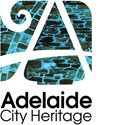What’s the score at Adelaide Oval?

Heritage is in the news again at Adelaide Oval. With the first flush of excitement over the redeveloped oval, heritage is once more under threat from those who would remove all traces of the past from Adelaide’s iconic cricket ground.
In the rush to embrace the new, a few commentators have suggested that we should get rid of the century old scoreboard to complete the modern makeover of Adelaide Oval. Bernard Humphreys, writing in the Advertiser, suggested ‘taking an axe’ to the scoreboard, or at least relocating it to the Number Two Ground to the West of the Oval. Other advocates of relocation have suggested Thebarton or Glenelg Ovals as new homes for the Adelaide Oval scoreboard.
But, as Jordan Ralph has written in the Conversation, arguments for relocating the scoreboard miss the point about protecting heritage. Heritage is not simply a collection of ‘museum pieces’ that can be moved wherever seems convenient, as Humphreys suggests. Much of the importance and value of heritage lies in its association with real places and events. If we disconnect something from its original place of use and meaning, we have sacrificed much of its value. Relocating the Adelaide Oval scoreboard because a few people prefer a homogenous modernity at the new stadium would make us all the poorer.
What connection is there between the Number 2 Ground, or some other oval and the infamous Bodyline Test of 1933 or with the triumphs witnessed on the old scoreboard as Bradman, Chappell and Hookes racked up the runs and some memorable victories? While we can all appreciate the modern comforts and amenities afforded by the new stadium, the scoreboard offers us an irreplaceable connection to the crowds and heroes of games past. The nearby grassy hill and scoreboard bar also have long and somewhat notorious traditions of their own.
Places like Adelaide Oval are public spaces in the best sense as they are where we go to create and enjoy our culture and traditions. For more than 140 years, Adelaide Oval has been the sporting heart of the city. Our annual Test Cricket events are also one of the few times that Adelaide features on screens around the world. Adelaide Oval’s new blend of heritage and modern facilities is striking and memorable. The Cathedral end vista, including the scoreboard, is what identifies the ground as Adelaide’s.
The manually operated scoreboard was designed by architect Kenneth Milne and began service on 3 November 1911. It operates over four storeys and represented a significant innovation in the detail and layout of the match information it provides. Milne was also the architect for a number of other Adelaide heritage listed buildings such as the Hampshire Hotel on Grote Street, Lister House on North Terrace, Sunnyside in North Adelaide and Arbury Park at Aldgate.
Adelaide’s scoreboard has always been admired for its elegant simplicity and efficiency. And it’s not as if the new stadium lacks the latest in digital screens. As a number of people have observed, at least the old scoreboard provides constant, reliable information and is mercifully free of the flashy advertising and gratuitous messaging of its digital companion. Effective and iconic, the old board looks like it has at least another century in it. It was first heritage listed by the National Trust in 1984 and added to the State Heritage Register in 1986.
Modern sporting stadiums have a bland sameness about them. While most people appear pleased with the amenity of the newly redeveloped spaces, no one is claiming that the new Adelaide Oval is a work of great architectural note. As the stadium is unfinished, its architectural merit cannot be assessed fully just yet. It appears well designed and functional, but that is hardly remarkable in itself. The preservation of heritage within the new development makes it notable for recognising the traditions of the place and those of our city. It connects current and future generations to the experience and memories of previous ones.
In this case, heritage listing and advocacy have proven effective at preserving essential aspects of the Oval within the site redevelopment. In the negotiations on the redevelopment proposal the South Australian Cricket Association (SACA) vigorously maintained the importance of preserving heritage listed features of the Oval including the Northern Mound (the Hill) the Moreton Bay fig trees and the scoreboard.
We can all be pleased that SACA, AOSMA and the State Government have struck a balance between heritage and modern amenities within the new Oval so far. There’s no reason why we cannot continue to enjoy both. And there is definitely no reason to consider relocating the scoreboard.





Do you have a comment to share?